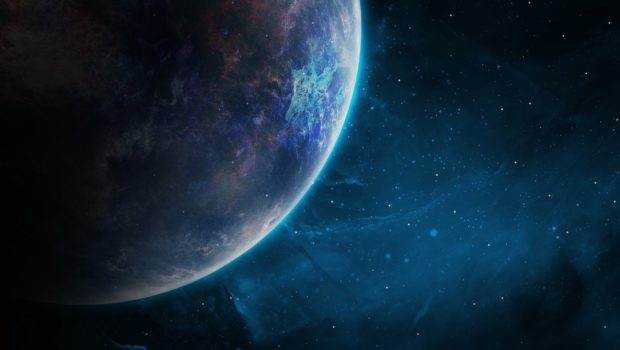Habitable Exoplanets Similar to our Earth: Could Life Exist There?
During the last decade, our knowledge of planets surrounding other stars has increased exponentially. These are known as exoplanets, and the total of potentially habitable exoplanets we’re aware of has leaped from dozens to thousands in only a handful of years thanks to developments in sensory equipment used to survey the farthest reaches of known space. The closest habitable exoplanets to Earth include Proxima Centauri B, a mere 4.22 light-years away from us.
Recently, there has been an increased cultural and economic interest in space. It’s much more common to see, for example, an aerospace company in UK help launch satellites for commercial customers with reusable rockets than it would have been just a few years ago. The rise in such medium-scale launches suggests that we’re in a new golden age of space technology.
Perhaps, then, it is time to look at the possibilities that lie further outside of Earth’s orbit. The potentially habitable exoplanets NASA has so far discovered come in all shapes and sizes, and the total keeps growing every year. With this new information, we can start using hard science to determine the likelihood of these planets incubating life.
What Would Potentially Habitable Exoplanets Look Like
When imaging a planet that could sustain life, the temptation is to conceive of conditions similar to Earth. But how do we define these similarities? Many rock planets of a similar size to Earth have been found, which would provide a foundation for an ecosystem on habitable exoplanets. Gas giant planets such as Saturn and Jupiter would be considerably less likely to provide a hospitable habitat, certainly. However, the majority of planets discovered in the size range of Earth are located in the orbit of huge red dwarf stars. Due to the massive amounts of heat and radiation generated by red dwarves, the range of a planet’s orbit within which life could survive is much, much narrower than that revolving around a yellow star like our sun. Yellow (or G-type) stars like ours are much less common from what we know of the universe, yet they are by far the most potentially habitable exoplanets. However, towards the other end of the scale exist orange dwarf stars. Orange dwarf stars burn steadily at cooler temperatures for many billions of years, allowing for the stability necessary for a climate to host evolving life. More significantly, astronomers have discovered approximately three orange dwarfs to every one yellow sun in the Milky Way. Orange dwarves boast a habitable zone comparable to our sun, making them prime candidates for exoplanets with ecological potential.
Could the Known Habitable Exoplanets Hold Life?
While it’s tempting to try and look at Earth’s conditions as the template for known habitable exoplanets, we may be letting our own biases get in the way of the truth. Saturn’s Titan moon, for example, is significantly smaller than Mars. Yet it boasts an atmosphere even thicker than Earth’s. Jupiter’s Europa moon is a heaving Waterworld that may offer optimal conditions for subsurface water life. From this, we can see that conditions with the potential to support life do not necessarily have to mirror those of Earth. The concept of a ‘habitable zone’ can also prove misleading. With the right meteorological conditions, a planet could have an atmosphere with sufficient cloud cover to protect life from heat and radiation that would otherwise be deadly. A colder planet could support life beneath the ice of its surface, while a hotter climate could see lifeforms develop in the cooler conditions of the upper atmosphere.
How Will Life Alter Its Own Biosphere?
We tend to think of life and habitat existing across a binary divide, which is to say that the conditions for life to develop have to be in place from the beginning. But we only have to look to Earth to see that the relationship is more of a two-way street. Our planet’s ecology hosts a multitude of feedback mechanisms that help alter our environment in ways that help sustain life. One obvious example is the way trees provide oxygen and regulate CO2 emissions to provide breathable air for fauna. Such ecological relationships could develop on habitable exoplanets to create conditions to support lifeforms in ways very different from our own.
Conclusion: Life on Habitable Exoplanets Could Exist, But Not as We Know It
Somehow, somewhere, there have to be habitable exoplanets in the universe with the conditions for lifeforms to develop. It would be arrogant to imagine otherwise. However, we must rid ourselves of the human-centric thinking that life elsewhere would have to resemble Earth’s climate. With the right combination of heat and hydrogen, many different kinds of lifeforms could evolve around a unique climate and topography, affected by the content of the atmosphere. There are so many factors in play that it’s almost impossible to definitively rule out any aspects of what habitable exoplanets could like. To imagine alien life growing in such extreme conditions, we need only to examine our own oceans. Deep below the water’s surface away from light and heat, the deep ocean teams with life forms that have adapted to thrive in pressurized environments that would easily kill a human. After all, we know more about the known universe than we do about the deepest parts of the sea. The moral of the story is that our presumptions of what habitable exoplanets would look like are skewed by our own preconceived notions of a livable environment. Life, be it flora, fauna, or bacteria, can adapt to the harshest of environments. When considering the possibility of how life on an exoplanet would look, we would be wise not to rule anything out.
Cover Image: https://pixabay.com/illustrations/space-galaxy-planet-universe-1569133/

















